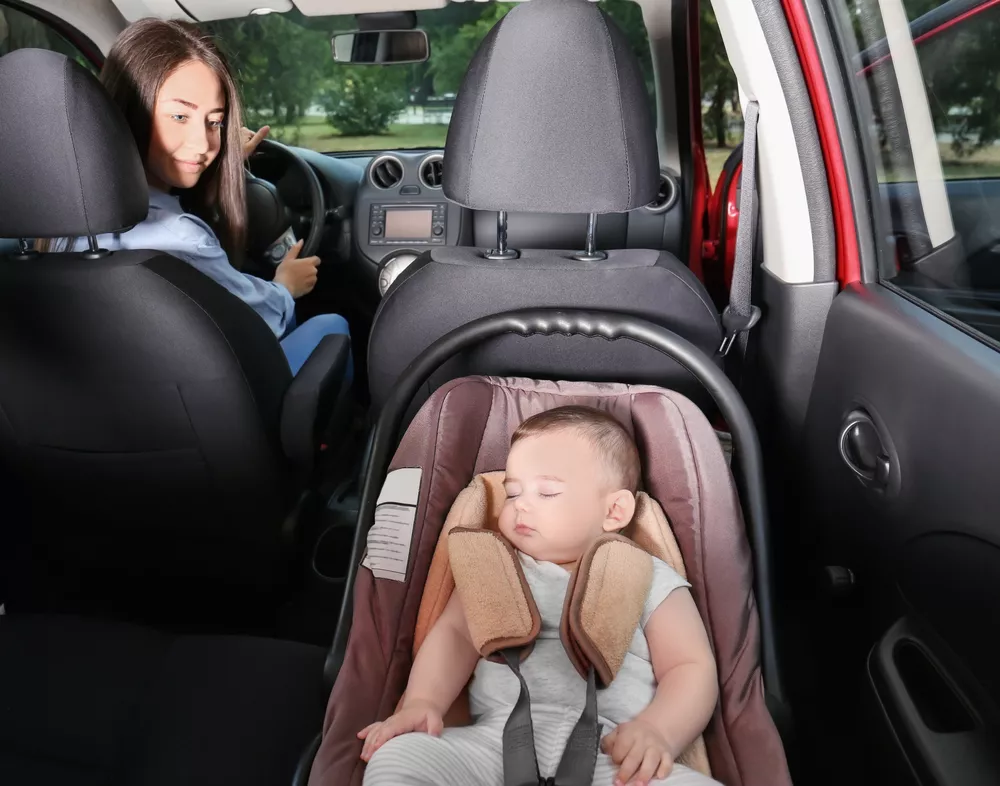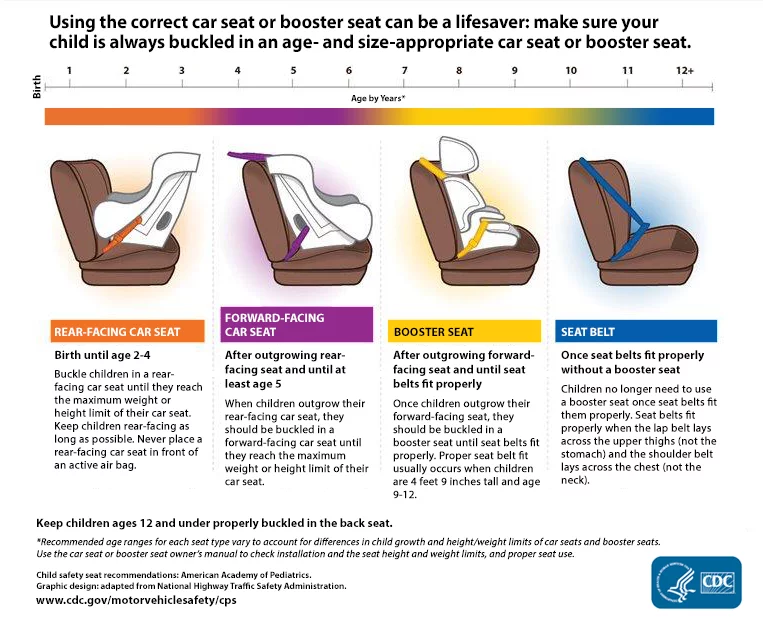The dangers present when driving with children
As a parent, your number one priority is to protect your children. Unfortunately, many parents ignore or are unaware of critical safety precautions they can take when driving with a baby on board. Indeed, the following statistics are a chilling reminder of the importance of taking precautions when traveling by car with children in tow:
Table of Contents
Toggle- According to the Insurance Institute for Highway Safety (IIHS), car accidents account for 1 in 4 unintentional child injury deaths. In 2018 alone, 636 kids aged 12 or younger died in motor vehicle accidents nationwide, while over 97,000 sustained injuries. Of those 636 child passenger fatalities, a third (33%) were unrestrained at the time of the crash.
- According to the Texas Department of Transportation, 70 children aged eight or younger died in vehicle crashes in 2019 alone. Of those, 30 kids were not buckled up at the time of the collision (nearly 43%).
Causes of child passenger injuries and fatalities
A study by researchers at the Association for the Advancement of Automotive Medicine (AAAM) identified causes of child passenger deaths in motor vehicle crashes as a result of being struck or striking vehicles or objects such as:
- SUVs, pickup trucks, or vans (33%)
- Heavy vehicles, including 18-wheelers and other trucks (32%)
- Stationary objects (17%)
- Passengers cars or minivans (13%)
- Rollover accidents (5%)
According to researchers at the AAAM, gross misuse of child restraint is the main cause of approximately 12% of child passenger fatalities.
Use the appropriate car seat for your child's age & size
To prevent misuse of child restraints, it’s critical to choose age-appropriate booster seats, car seats, and seat belts, as these can significantly lower the risk of injury and death for children. In fact, using age- and size-appropriate car seats can reduce your child’s risk of injury by between 71% and 82% compared to using seat belts alone, according to the Centers for Disease Control and Prevention.
Using the right car seat is the number one safety precaution you can take when driving with a baby or child on board. When buckling up your little one, make sure that your child is properly restrained using a car seat (rear- or forward-facing), booster seat, or a seat belt, depending on the child’s age, weight, and height:
- Use a rear-facing car seat for babies, infants, and toddlers from birth until ages 2 to 4. In other words, you must use rear-facing car seats until your child reaches the maximum weight and height limits.
- Once your child outgrows the rear-facing car seat, you must buckle them in a forward-facing car seat. Typically, it’s appropriate to use the forward-facing car seat until the child reaches the age of 5 or the maximum weight and height limits.
- When the child is too big for the forward-facing car seat, buckle them in a booster seat. You can use a booster seat until a seat belt fits properly.
- When seat belts fit properly without the use of a booster seat, you may no longer need the booster seat. Usually, this happens between the ages of 9 and 12 or when a child is about 4 feet 9 inches tall.
More safety tips to prevent child passenger injuries
Take the following eight safety precautions to prevent child passenger injuries when driving with kids in the vehicle:
- Always buckle your kids up, even for short trips.
- Install car seats and booster seats properly according to the seat’s manual (ideally, you should ask a certified Child Passenger Safety Technician to help you install the seat. Search this directory to find a CPS Tech near you).
- Always seat children in the back seat, ideally in the middle, for the best possible protection.
- Never seat your child in front of an airbag.
- Secure your child’s toys to the car seat to prevent children from throwing them and becoming a distraction.
- Feed and change diapers before you hit the road so that your child doesn’t become restless during the trip.
- Consider installing a back-seat mirror to monitor your baby.
- Avoid driving alone with your child; it’s best to have someone in the car to keep an eye on the little one.
Speak with an experienced Houston personal injury lawyer
Regrettably, the best safety tips can never truly eliminate the risks and injuries caused by other negligent drivers on the road. If your child got hurt in a car accident due to someone else’s negligence, seek help from an experienced Houston personal injury lawyer. Schedule a consultation with Johnson Garcia LLP to review your case and help you recover damages from the negligent party. Call us today at (832) 844-6700 to discuss your legal options.



